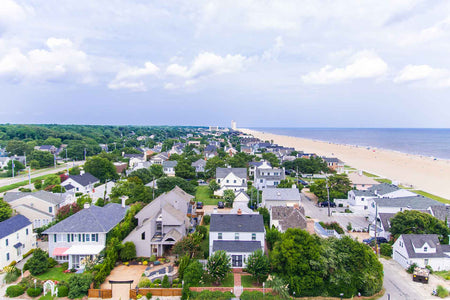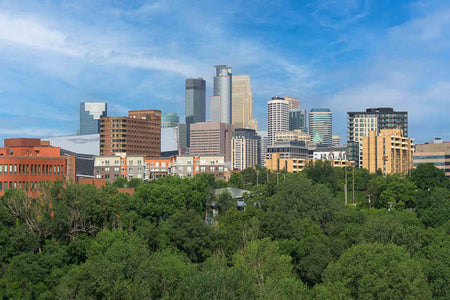Pennsylvania is a sight to behold during springtime, with blooming flowers and warmer weather. Unfortunately, for many, it also marks the start of allergy season. If you are struggling with sneezing, itching, and a runny nose, know that you are not alone. Millions of people in Pennsylvania experience allergies, but there are ways to mitigate their impact on your daily routine.
What Causes Allergies in Pennsylvania?
When your immune system overreacts to a typically harmless substance, such as pollen, dust mites, or pet dander, it results in an allergic reaction. In Pennsylvania, the most commonly found allergens include tree and grass pollen, as well as mold spores. These allergens are more prevalent during the spring and fall months, but can vary depending on the region and weather conditions.
Understanding Pennsylvania Allergy By Season
The state experiences unique seasons, each with its own set of allergens. Understanding the different allergens that prevail during each season can help you better manage your allergies and enjoy the beauty of Pennsylvania without the discomfort. Here's a breakdown of some tips to consider:
Spring
Pollen Galore Springtime in Pennsylvania is a season of pollen abundance. As snow melts, flowers blossom, and trees such as oak, birch, and maple release their pollen into the air, causing allergic reactions in many individuals. Grass pollen also becomes a common allergen during this season. If you find yourself sneezing, itching, or experiencing a runny nose during spring, pollen is likely the culprit.
Summer
The Rise of Mold Summer is a time for outdoor fun, but it also comes with an increase in mold spores. The warm and humid climate of Pennsylvania creates the perfect conditions for mold growth. Mold can be found both indoors and outdoors, thriving in damp areas such as basements, bathrooms, and gardens. If you experience symptoms like coughing, wheezing, or watery eyes during summer, mold may be to blame.
Related: Summer Allergies Guide
Fall
Ragweed Takes Over Fall in Pennsylvania is synonymous with ragweed season. Ragweed is a common weed that releases its pollen into the air, causing allergic reactions in many individuals. The lightweight pollen particles can travel long distances, making it difficult to escape its effects. If you find yourself sneezing, experiencing nasal congestion, or having itchy eyes during fall, ragweed is likely the culprit.
Related: Fall Allergies Guide
Winter
Indoor Allergens Winter brings relief from outdoor allergens, but it introduces a new set of challenges indoors. Spending more time indoors exposes you to indoor allergens such as dust mites, pet dander, and mold spores. These allergens can trigger symptoms like sneezing, coughing, and congestion. Keeping your indoor environment clean and well-ventilated can help alleviate winter allergies.
Allergens By Region in Pennsylvania
It's important to understand the different allergens present in your area to take the necessary steps and manage your allergies effectively. Here's a comprehensive guide to the allergens by region in Pennsylvania:
Eastern Pennsylvania
Tree pollen, grass pollen, and ragweed are the most common allergens in the eastern region of Pennsylvania. These allergens cause seasonal allergies and can lead to symptoms such as itchy eyes, congestion, and sneezing. Residents in this area should keep an eye on the pollen count and take the necessary precautions to minimize exposure.
Related: Pollen Count in Philadelphia
Western Pennsylvania
Mold spores, dust mites, and pet dander are the primary triggers for allergies in western Pennsylvania. Mold spores thrive in damp environments, while dust mites and pet dander are common indoor allergens. Maintaining a clean living space is crucial to lower the risk of an allergic reaction.
Central Pennsylvania
Central Pennsylvania has a mix of allergens from both the eastern and western regions. Tree pollen, grass pollen, mold spores, and dust mites are the common triggers in this area. It's important to be cautious during allergy seasons and take preventive measures to minimize exposure.
Northern Pennsylvania
Tree pollen, ragweed, and mold spores are the primary culprits in northern Pennsylvania. It's vital to stay informed about the pollen count and mold levels in your area to manage your allergy symptoms effectively.
Southern Pennsylvania
Tree pollen, grass pollen, mold spores, and dust mites are the common triggers in southern Pennsylvania. It's advisable to stay informed about the allergen levels and take preventive measures to alleviate allergy symptoms.
Pennsylvania Allergy Season FAQ
Here are some frequently asked questions about allergy season in Pennsylvania:
When is allergy season in Pennsylvania?
Allergy season in Pennsylvania typically starts in the spring when trees release pollen into the air. This is followed by grass pollen in the summer and ragweed pollen in the fall. However, the timing and duration of allergy seasons can vary depending on weather conditions and other factors.
What are the most common allergens in Pennsylvania?
Pennsylvania is home to a wide range of allergens that can cause discomfort and health problems for many people. Here are the most common allergens found in Pennsylvania:
- Pollen. During the spring and fall seasons, Pennsylvania has a high pollen count. Ragweed, grasses, and trees are common pollen allergens.
- Mold. The humid climate in Pennsylvania provides an ideal environment for mold growth, which can trigger allergic reactions in susceptible individuals.
- Dust mites. These tiny creatures thrive in warm and humid environments, such as Pennsylvania homes, and can cause respiratory symptoms and skin irritation.
- Pet dander. Many households in Pennsylvania have pets, and pet dander can be a significant allergen for people with sensitivities. Cats and dogs are the most common culprits.
- Insect stings. Pennsylvania is home to various stinging insects, including bees, wasps, and hornets, which can pose a danger to individuals with insect sting allergies.
Are there any specific regions in Pennsylvania that are worse for allergies?
While allergens can be found throughout Pennsylvania, certain regions may have higher concentrations or specific allergens that are more prevalent. The severity of allergies can vary depending on factors such as climate, vegetation, and air quality. However, it is essential to note that allergies can affect individuals differently, and what may be problematic for one person may not be as significant for another.
Are there any unique allergens in Pennsylvania?
While the most common allergens in Pennsylvania are similar to those found in other regions, there are a few unique allergens that residents should be aware of:
- Poison ivy. Pennsylvania is home to poison ivy, a plant that can cause a severe allergic skin reaction upon contact. Learn to identify and avoid this plant to prevent an itchy and uncomfortable rash.
- Stink bugs. While not a traditional allergen, stink bugs can trigger allergic symptoms in some individuals. These insects release a pungent odor when threatened, which can irritate the respiratory system.









